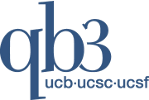Optimizing Production of Antigens and Fabs in the Context of Generating Recombinant Antibodies to Human Proteins.
Posted on October 5, 2015
| Title | Optimizing Production of Antigens and Fabs in the Context of Generating Recombinant Antibodies to Human Proteins. |
| Publication Type | Journal Article |
| Authors | Zhong, Nan, Loppnau Peter, Seitova Alma, Ravichandran Mani, Fenner Maria, Jain Harshika, Bhattacharya Anandi, Hutchinson Ashley, Paduch Marcin, Lu Vincent, Olszewski Michal, Kossiakoff Anthony A., Dowdell Evan, Koide Akiko, Koide Shohei, Huang Haiming, Nadeem Vincent, Sidhu Sachdev S., Greenblatt Jack F., Marcon Edyta, Arrowsmith Cheryl H., Edwards Aled M., and Gräslund Susanne |
| PubMed ID | 26437229 |
| PubMed Central ID | PMC4593582 |
| Grant List | GM072688 / GM / NIGMS NIH HHS / United States GM094588 / GM / NIGMS NIH HHS / United States HG006436 / HG / NHGRI NIH HHS / United States MOP-136944 / / Canadian Institutes of Health Research / Canada |
RAN Publications
Latest publications
-
Conformation-specific Synthetic Antibodies Discriminate Multiple Functional States of the Ion Channel CorA. (published on 2023 Jul 01)
-
Structural basis for assembly and lipid-mediated gating of LRRC8A:C volume-regulated anion channels. (published on 2023 Mar 16)



